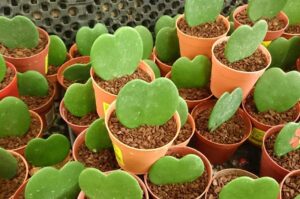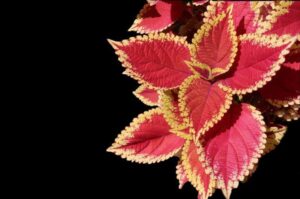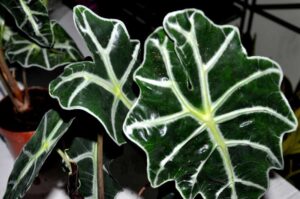How to care for your Calathea orbifolia – A complete guide
Calathea orbifolia
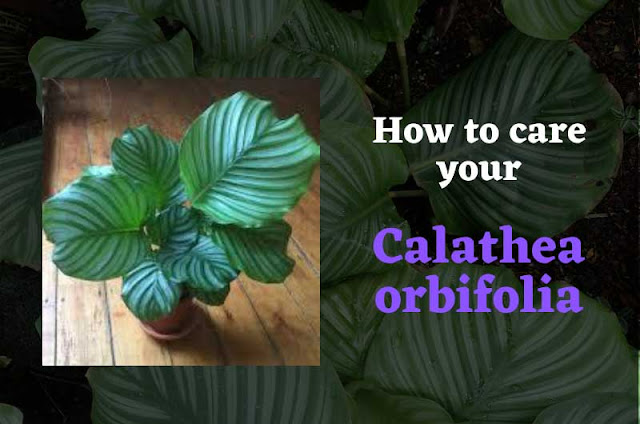
As we all know beauty is subjective, and there is an old saying that “Beauty lies in the eyes of the beholder”. But this saying does not stand true for certain universal beautiful products, which always attract everyone by their fascinating appearance.
From such an attractive piece of beauty, an interesting indoor plant is Calathea orbifolia. Its big oval green leaves can force anyone to fall in deep love with it. Its silvery lines or grooves on the leaves make it such a wonderful creation of nature so that you will be obliged to stand still and gaze at the plant for a few minutes.
Calathea orbifolia grows happily in well-drained fertile potting soil, It loves to be in a humid environment, and a temperature range of 15 to 23 degrees Celcius. Low temperatures decrease the growth rate of the plant. A place getting bright indirect sunlight is ideal for this plant. The waterlogging conditions may cause harm to the plant roots.

Calathea orbifolia belongs to the family Marantaceae, it is also known as prayer plant family. Calathea is a prayer plant. It is called so because, in the evening time its leaves move upwards, which seems like doing their evening prayer. The next day it returns to its original shape.
Calathea orbifolia is a tropical indoor plant native to Bolivia. It has big oval leaves and leaves have silver-green lines, making this plant a worthy addition to your indoor plant collection. Some highlights about this plant are given below.
- Botanical name- Calathea orbifolia
- Common name- Prayers plant
- Family- Marantaceae
- Origin- Bolivia
- Plant type- Tropical indoor plant
- Soil requirements- Fertile soil with good drainage and rich organic matter. The plant is sensitive to waterlogging conditions but requires moist soil.
- Humidity- Require high humidity
- Temperature- The plant grows well in 15o C to 23o C. Growth is very slow during the winters.
- Watering requirements- It loves water but does not like waterlogging conditions. Therefore, less but frequent irrigation is necessary.
- Fertilizer- Organic fertilizer is best for Calathea.
- Plant propagation- It is done through the tubers/rhizome division.
- Repotting- The plant does not always like repotting. But it can be done once in every 1 to 2 years.
- Pruning- This plant does not always require extensive pruning, But only old and dead leaves are to be pruned out.
- Pest and diseases- Since it is an indoor plant, less contact with the pest. However, waterlogging may cause root rot and deformation of leaves.
- Toxicity- The plant is non-toxic to pets and other animals.
Complete care guide for Calathea orbifolia
Light requirement-
Calathea requires medium to bright diffused light for its growth and development. Direct sunlight is always harmful to the plant. It may burn the leaves and make the plant grow slow. Therefore, medium indirect sunlight is best for this plant.
It is always advisable to keep the plant 5 to 8 feet away from the window so that ambient light is available for its growth. Never try to settle it outside. The plant will not be happy, and it will not make you happy.
Soil requirement-
Calathea grows well in soil with a good drainage facility and with good organic matter. The plant does not like waterlogging conditions. In waterlogging conditions the leaves may turn yellow and growth will be retarded.
To provide the appropriate microclimate beneath the root the soil should have a good water holding capacity along with a good drainage facility. In order to achieve the same, the potting soil should contain coconut coir peat/ cocopeat as it has a rich water retention capacity and it allows the roots to breathe properly.
To improve the drainage facility perlite and pumice can be added. You can mix two-part of cocopeat with one part of perlite, to make a suitable soil solution which neither is very fond of water nor completely hate water, an ideal growing medium for this plant.
You can add organic matter to the soil solution so that it could improve the physical property of the soil and increase water holding capacity as well as increase porosity. It will also provide the necessary nutrients to the plant.
Temperature requirement
Calathea orbifolia is very sensitive to low temperatures. It can grow well in temperatures ranging from 15o C to 23o C. This temperature is similar to its native place i.e. Bolivia.
The plant is very sensitive to extreme temperatures. If the temperature goes above 27oC, leaves will curl and growth will be retarded.
Therefore, maintaining an ideal temperature is important for the growth of this plant.
Humidity
As this plant is originated from the tropical regions in Bolivia it loves to survive in a humid place. The higher the humidity, the healthier is the plant.
Plant basically is not fond of dry weather. It will shine and blush if you keep it in a humid area. Your kitchen and near your bathroom may be the best suitable places for this plant to keep, as they are one of the most humid places inside your house.
Here are some points that help you to find how to maintain high humidity
1. Grouping
Sometimes plants are kept in groups so that by transpiration, the environment will remain moist and it will have high humidity. Therefore, if you are planning to grow Calathea then you can keep them in a group with other plants.
This will lead to high humidity as the other plants transpire and it will provide an ambient condition for the Calathea to grow well.
2. Location
In order to provide humid conditions to your Calathea you can place them in such a location as your kitchen area, bathroom area, which is always humid than other places in your house.
Before selecting the location, you have to take care of ambient lighting.
The place should have medium indirect sunlight.
3. Pebble tray
You can try this method also. Put some pebbles on a tray and then fill it with water. Keep your Calathea pot on the pebble tray. The water will evaporate and keep the surroundings humid.

4. Misting
It is also a good method to keep the atmosphere humid. You can use a sprayer, and spray fine droplets to the plats in the morning hours. It will also prevent the plants from spider and mite infestation.
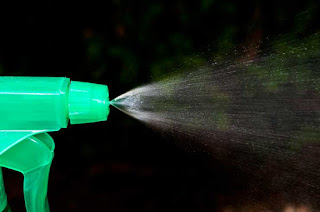
5. Humidifier
You can also, invest in a good humidifier to keep your Calathea orbifolia looking fresh and healthy. It is a costly investment for your plant but will let you roam around freely.
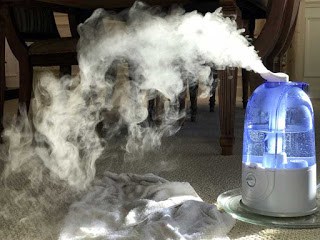
Water requirement
As a tropical plant Calathea orbifolia requires evenly moist soil, which is not completely dry. It can be achieved by regular irrigation. But point to be noted that, there should be no water logging condition.
You have to apply water regularly but not In large quantities.
If you keep the soil dry, the plant will not even show you the wilting or water stress symptoms. It will fade away.
If you will apply too much water, then the roots of the plant will rot and the plant will collapse.
Therefore, apply low irrigations at regular intervals. You can check out the time of irrigation by checking the top one to two-inch layer of soil by hand. If it is feeling dry, then go for irrigation.
Regarding the water quality, the plant is very sensitive to salts and ions present in water. Therefore, try to apply distilled water free from unnecessary salts and particles.
You can also, use rainwater as it is the purest form of water as we all know from childhood.
Fertilizer requirement-
Roots of Calathea orbifolia do not react properly to inorganic fertilizers. Therefore, it is always advisable to apply organic fertilizer. It will help in multiple ways. It will increase the physical quality of the soil and also it will provide nutrients to the plants.
Always apply fertilizers during the growing seasons that is from the month of April to September. Never apply during winter days as the plant growth during these days are retarded.
Pruning
Calathea orbifolia does not require pruning, as the plant does not have complex branches. It only consists of a set of single-leaved stems. However old, yellow crunchy leaves are to be pruned out.
For cutting the older leaves you have to use sterilized blades or cutters, to prevent microbial infection.
Repotting
This plant if once disturbed from its acclimatized environment, is hard to recover. Therefore, a very less no. of repotting is always advisable.
When the growth of the plant is retarded, indicates that the plant needs repotting. It is required after one to two years of plant growth.
For, repotting you have to take a pot of 8 to 10-inch diameter, then fill it with appropriate potting mixture and then plant the Calathea inside Never press the soil to hard. Provide some room for root respiration. It is as simple as that.
After that, you have to take care of the plant very delicately. Once the plant is established and achieved its regular growth, then you are good to go.
Diseases and pest infestation
The waterlogging condition prevents the growth of the plant, as the roots start rotting. The damp condition also favors the growth of fungus, powdery mildew, etc. Therefore, always try the soil to keep only moist, but never waterlogged.
The green lustrous leaves always attract pests like mealybug, aphids, mites, and whitefly. You can find the damage symptoms on the leaves. They may be in terms of leaf spots, webs, etc. To prevent them you can spray neem oil.
Propagation of Calathea orbifolia
In spite of its beauty and fascinating appearance, it is not commonly available everywhere because of its difficulty to propagate. It can only be propagated through tubers. No other methods are successful.
Following are the steps to propagate a Calathea orbifolia
- Prepare a new pot with proper potting soil.
- Take the mother plant out of its pot.
- Gently remove the soil adhered to the rhizome.
- Cut a section from the tuber, using a sterilized blade. Ensure that it contains at least a few healthy leaves and roots.
- Plant this in a new pot.
- Keep the soil moist and maintain humidity around the plant. You can do this by using a polythene cover and mist inside. It will also provide warmth to the plant.
- When the plant starts its regular growth, then remove the polythene and maintain the plant as usual.
Toxicity
Calathea orbifolia has no definite toxic effect on pets or humans if consumed accidentally. But it may upset your stomach. So, it is not advisable.
FAQ
Why leaves of Calathea are drooping?
It may be due to a shortage of water. You have to check the symptom thoroughly and water the plants. If the plant does not respond, then you have to change the soil.
Why leaves of Calathea orbifolia are curling?
It may be due to shortage of moisture, or maybe due to lack of ambient humidity.
Why Calathea orbifolia have brown edges on the leaves?

It may be due to water stress conditions. It indicates that the water you provide to the plant is not sufficient for its growth and development.
You have to provide water more often, or you have to change the potting mixture. As the previous mixture of soil is no longer capable of holding a good amount of moisture.
Lack of proper humidity may be the reason for such symptoms, you can adjust the ambient humidity to cure the disease.
Why leaves of Calathea orbifolia are drooping after repotting?
Calathea does not like repotting. It is just like a shock for the plant. After repotting it needs some time to adjust in its new home and the leaves at this time may show drooping symptoms.
If your plant is also showing the same, then don’t worry, just supply sufficient moisture, medium indirect light and, high humidity, the plant will surely survive.
Opinion
Calathea orbifolia is somehow a difficult plant to grow, but with proper care and maintenance, it can surely do well at your home. It will keep you engage with itself all the time, and its movement throughout the day makes it more desirable for anyone.


